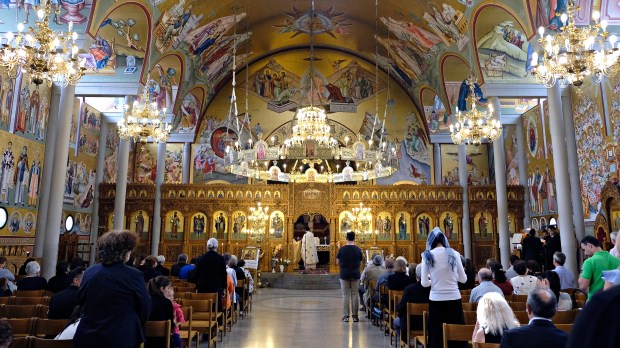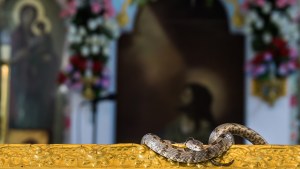Lenten Campaign 2025
This content is free of charge, as are all our articles.
Support us with a donation that is tax-deductible and enable us to continue to reach millions of readers.
When reading about the Greek Orthodox Church, it is tempting to think that this term refers to Orthodox Christians in the country of Greece.
However, this it not always the case, and most often this term refers to a much broader group of Orthodox Christians.
Greek Orthodox Church
In 1054, Pope Leo IX of Rome and Patriarch Michael I Kiroularious of Constantinople excommunicated each other. This act resulted in the Great East-West schism in the Church that has endured for nearly 1,000 years.
Christians who followed the Constantinople leadership became known as the Greek Orthodox Church. The reason behind this is because of the original language used for the liturgy, as the Catholic Encyclopedia explains.
The Greek Orthodox Churches are Churches separated from Rome and following the Byzantine Rite, i.e. the rite developed at Constantinople between the fourth and tenth centuries. In the beginning, the only language of this rite was Greek.
Eventually the Byzantine Rite was translated into various languages, such as Russian, or other Slavic languages.
The Greek Orthodox Church today is an association of churches that are “autocephalous,” meaning that they are “self-governing.” The Patriarch of Constantinople, (currently Bartholomew I), is the spiritual leader of these Christians, but does not hold any governing power over each individual “church.”
Orthodox Church in Greece and Cyprus
The particular church in Greece has its own archbishop, currently Hieronymos II, Archbishop of Athens and All Greece and Primate of the Autocephalous Orthodox Church of Greece.
Chrysostomos II is similarly the archbishop of Cyprus. Both churches are “self-governing,” though still loosely under the spiritual leadership of the Patriarch of Constantinople, Bartholomew I.
Greece is still dominated by Orthodox Christians, but Roman Catholics are growing in number in recent years.



